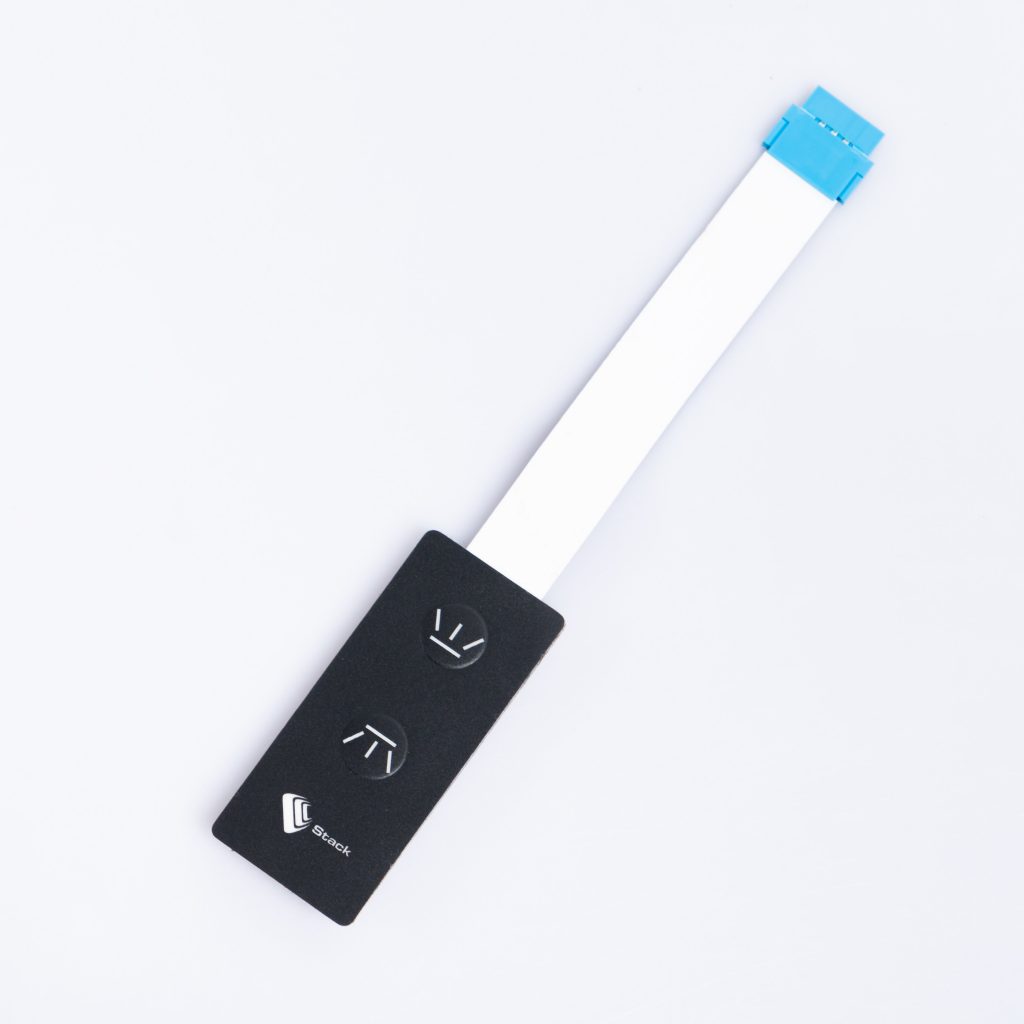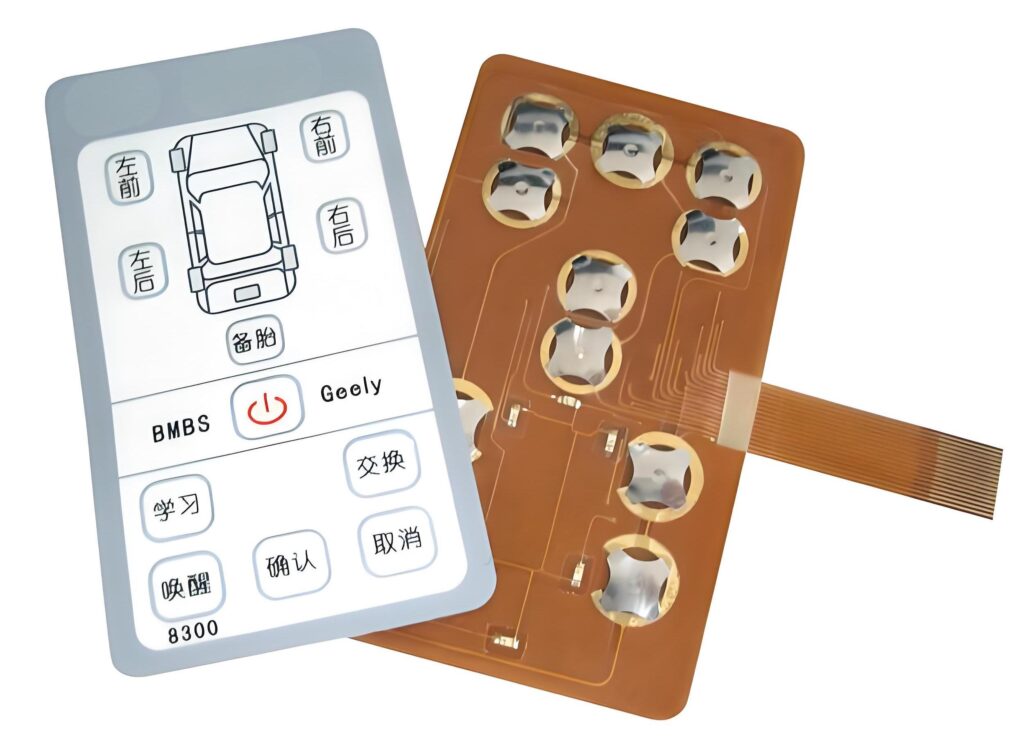Recognizing the Importance of Membrane Change in Modern Electronic Devices
Membrane buttons are integral elements in modern-day electronic gadgets. They use a mix of capability and design that enhances individual interaction. Their resilient and light-weight nature makes them suitable for different applications. As sectors evolve, the demand for customization and advanced features grows. Comprehending exactly how membrane switches add to technology reveals their relevance fit the future of electronic devices. What exists ahead for this innovation?
The Basics of Membrane Layer Switch Innovation
Although usually neglected, membrane layer button innovation plays a vital function in the contemporary electronic devices landscape - membrane switch. These tools, composed of numerous layers, function as customer interfaces for different electronic items, ranging from family appliances to clinical equipment. A common membrane layer button contains a visuals overlay, a spacer layer, and a circuit layer, which are meticulously set up to create a practical interface.When stress is applied to the overlay, the circuit layer is completed, permitting signals to be sent to the gadget. This modern technology is known for its versatility, making it possible for customization in performance, design, and form to satisfy specific user requirements. In addition, membrane layer switches are lightweight and slim, making them suitable for applications where area is a premium. Their durability and resistance to environmental elements better enhance their appeal, ensuring they can endure rough problems while keeping capability. Overall, membrane layer button modern technology is essential to producing user-friendly and efficient electronic devices

Secret Advantages of Membrane Switches Over
Membrane layer switches over offer several vital benefits that make them a favored choice in numerous digital applications. Their style enables a portable kind aspect, allowing producers to produce lightweight and streamlined tools. Furthermore, membrane layer switches are resistant to dust, dampness, and chemicals, which enhances their sturdiness and long life popular environments. The responsive comments provided by these switches can boost customer experience, making them easy and user-friendly to operate.Furthermore, membrane buttons can be customized with diverse graphics and shades, enabling for unique branding chances. The manufacturing process is generally economical, especially for high-volume production, as it lowers assembly time and streamlines design. Lastly, membrane changes call for minimal maintenance, adding to reduced overall operational expenses. These advantages underscore their growing appeal in modern-day electronics, where integrity and user-friendly interfaces are necessary.

Applications Across Different Industries
The flexibility of membrane switches over allows their extensive adoption throughout numerous markets. In the medical area, they are typically used in diagnostic tools and client surveillance systems, offering a sturdy user interface resistant to impurities. The automotive sector uses membrane layer switches for control panel controls, boosting user experience with streamlined designs that hold up against extreme conditions. In consumer electronic devices, they work as control panels for gadgets such as microwaves and coffee machine, offering an user-friendly user interface that is easy to clean. The aerospace field employs membrane layer buttons in cockpit controls, where dependability and room effectiveness are paramount. Additionally, the industrial sector leverages these buttons in equipment and control systems to guarantee robust operation in requiring settings. This broad variety of applications underscores the versatility of membrane layer switches, making them indispensable components in improving performance and customer interaction across diverse technical landscapes.
Personalization and Design Flexibility

Future Fads in Membrane Layer Switch Over Growth
Arising fads in membrane layer button advancement indicate a growing emphasis on enhanced capability and combination with clever modern technologies. As customer need for much more sophisticated electronic gadgets increases, producers are concentrating on creating membrane layer switches over that not only offer basic functional functions however likewise integrate features like touch level of sensitivity, backlighting, and haptic feedback.Furthermore, advancements in products are expected to improve durability and ecological resistance, making membrane layer changes appropriate for diverse applications in sectors such as health care, automobile, and customer electronic devices. The combination of capacitive touch technology is likely to come to be much more prevalent, enabling for sleeker styles and boosted user interfaces. membrane switch.Additionally, the surge of the Internet of Points (IoT) is prompting the development of membrane layer switches over that can communicate wirelessly with various other gadgets, enhancing interconnectivity. Generally, the future of membrane layer button modern technology appears appealing, driven by development and the pursuit click resources of easy to use solutions
Often Asked Inquiries
How Do Membrane Layer Changes Contrast to Conventional Mechanical Buttons?
Membrane switches, being more space-efficient and supplying a sleek layout, comparison with traditional mechanical buttons that provide responsive responses. The former frequently include customizable graphics, while the latter normally ensure durability and dependability in numerous applications.
What Materials Are Commonly Made Use Of in Membrane Layer Switch Production?
Membrane layer buttons are commonly created making use of materials such as polyester, polycarbonate, and printed conductive inks. These products give resilience, responsiveness, and versatility, making them appropriate for different applications in digital tools and customer interfaces.
Can Membrane Switches Be Repaired or Recycled?
Membrane layer buttons can commonly be repaired, especially if small concerns develop, such as sticky failure or surface damage. Nonetheless, full reuse is normally limited due to wear and possible deterioration of materials with time.
How Do Ecological Elements Affect Membrane Layer Change Performance?
Ecological factors, such as direct exposure, moisture, and temperature to chemicals, considerably affect membrane button performance. Extreme problems can cause degradation, influencing responsiveness and durability, eventually endangering the performance of the tool in various applications.
What Is the Normal Life Expectancy of a Membrane Layer Switch?
The normal life-span of a membrane layer switch usually ranges from 1 to 5 million actuations, depending upon aspects such as usage regularity, ecological conditions, and the materials made use of in manufacturing, influencing resilience and efficiency longevity. A normal membrane layer switch is composed of a visuals overlay, a spacer layer, and a circuit layer, which are meticulously assembled to create a learn this here now practical interface - membrane switch.When stress is applied to the overlay, the circuit layer is finished, allowing signals to be transmitted to the gadget. The responsive comments given by these switches can enhance user experience, making them easy and intuitive to operate.Furthermore, membrane try this site buttons can be customized with diverse graphics and colors, allowing for distinct branding chances. As customer need for extra innovative electronic tools increases, producers are focusing on creating membrane changes that not just offer standard operational roles but also incorporate attributes like touch level of sensitivity, backlighting, and haptic feedback.Furthermore, advancements in materials are expected to improve sturdiness and ecological resistance, making membrane layer changes appropriate for varied applications in industries such as healthcare, automobile, and consumer electronic devices. The assimilation of capacitive touch modern technology is most likely to come to be a lot more common, allowing for sleeker designs and boosted customer interfaces.Additionally, the increase of the Web of Points (IoT) is motivating the advancement of membrane switches that can communicate wirelessly with various other devices, improving interconnectivity. Membrane switches, being much more space-efficient and offering a streamlined layout, comparison with traditional mechanical buttons that supply tactile responses